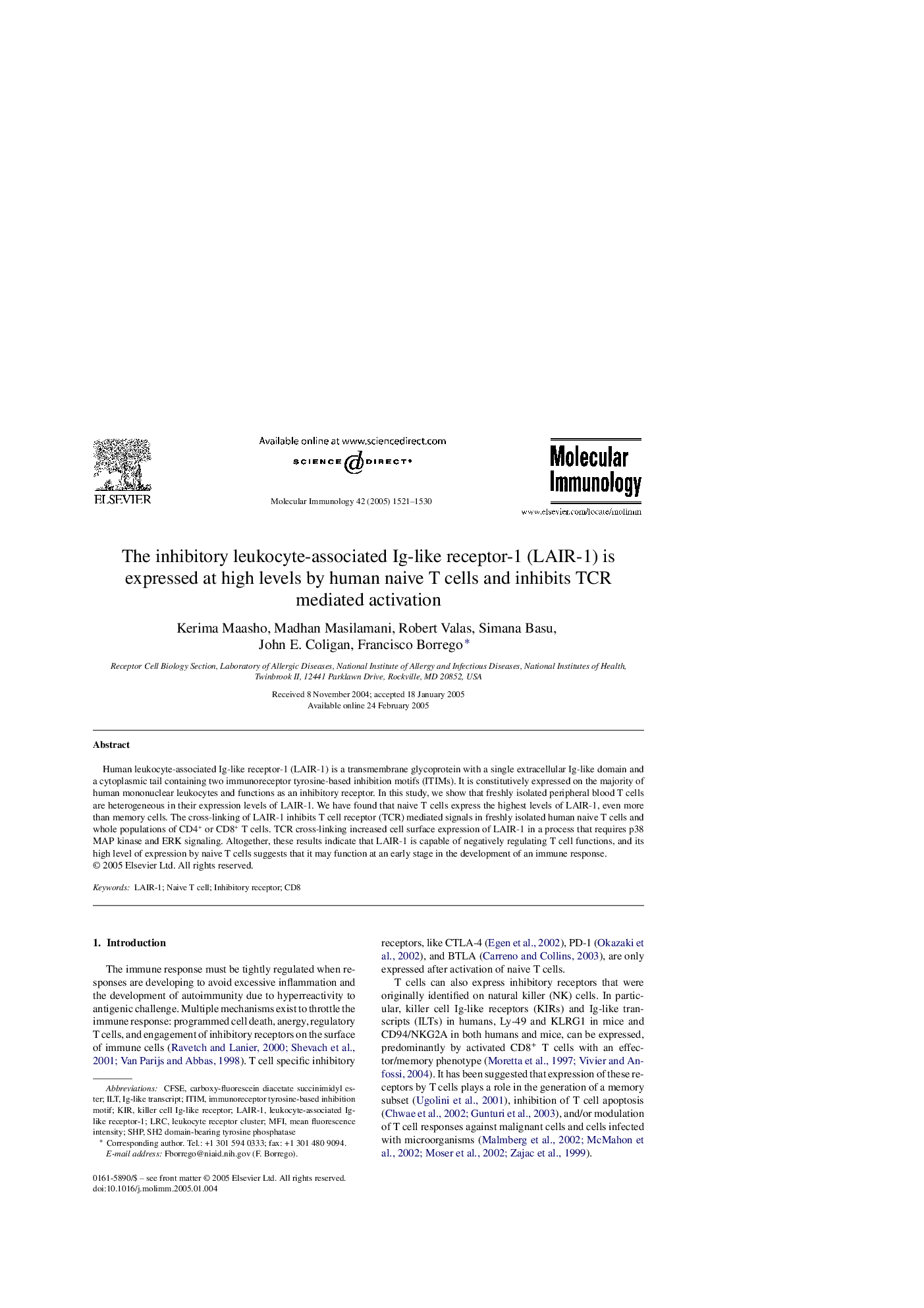| Article ID | Journal | Published Year | Pages | File Type |
|---|---|---|---|---|
| 9141686 | Molecular Immunology | 2005 | 10 Pages |
Abstract
Human leukocyte-associated Ig-like receptor-1 (LAIR-1) is a transmembrane glycoprotein with a single extracellular Ig-like domain and a cytoplasmic tail containing two immunoreceptor tyrosine-based inhibition motifs (ITIMs). It is constitutively expressed on the majority of human mononuclear leukocytes and functions as an inhibitory receptor. In this study, we show that freshly isolated peripheral blood T cells are heterogeneous in their expression levels of LAIR-1. We have found that naive T cells express the highest levels of LAIR-1, even more than memory cells. The cross-linking of LAIR-1 inhibits T cell receptor (TCR) mediated signals in freshly isolated human naive T cells and whole populations of CD4+ or CD8+ T cells. TCR cross-linking increased cell surface expression of LAIR-1 in a process that requires p38 MAP kinase and ERK signaling. Altogether, these results indicate that LAIR-1 is capable of negatively regulating T cell functions, and its high level of expression by naive T cells suggests that it may function at an early stage in the development of an immune response.
Keywords
Related Topics
Life Sciences
Biochemistry, Genetics and Molecular Biology
Molecular Biology
Authors
Kerima Maasho, Madhan Masilamani, Robert Valas, Simana Basu, John E. Coligan, Francisco Borrego,
